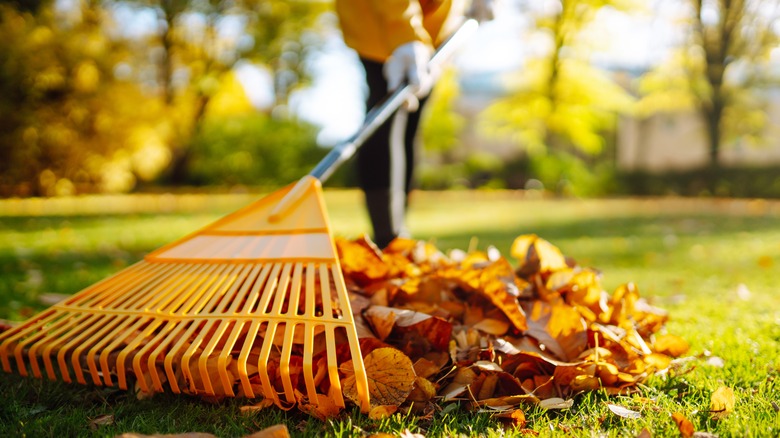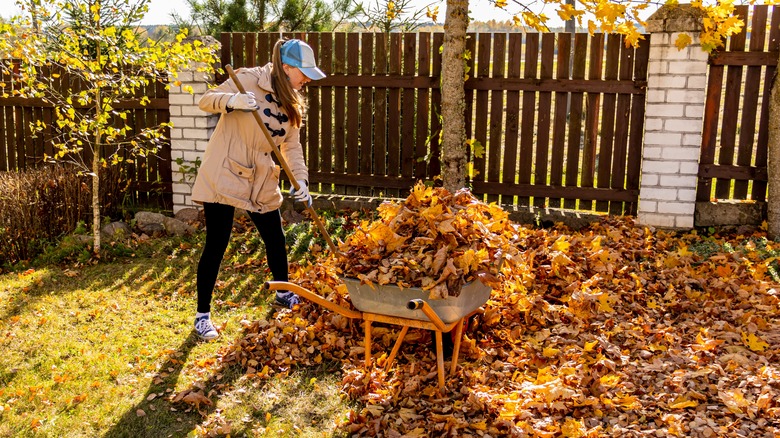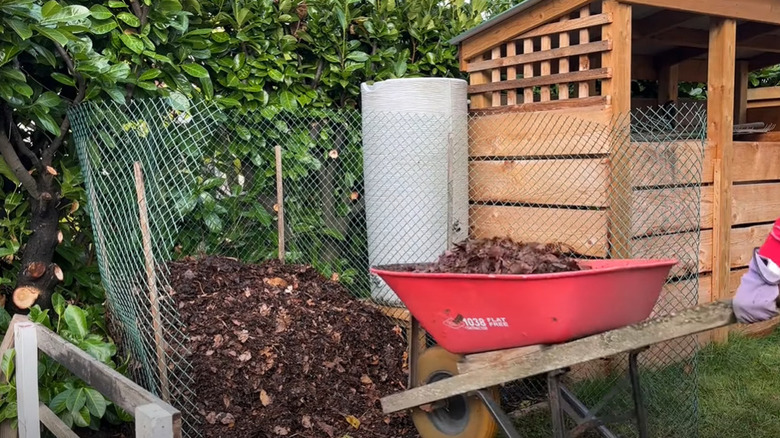Why The 'Leave The Leaves' Movement Isn't For Everyone
We may receive a commission on purchases made from links.
"Should you take leaves or leave them?" That eager question dances in the minds of numerous homeowners as the welcoming hues of fall paint the landscape in golds and reds. The playfully enchanting whooshing sound when you run through a pile evokes childhood nostalgia and joy. The widely accepted mantra suggests that the fallen foliage should be left undisturbed, acting as organic mulch or a natural supplement to the soil. However, the "leave the leaves" philosophy doesn't resonate with everyone, and it's not just a matter of aesthetics or personal preference. Your geographical location has a substantial influence.
Consider this: regions with high microbial activity in the soil experience the useful decomposition of these leaves. Yet, if your locale lacks this industrious soil life, the leaves stubbornly stick around, becoming less of a beneficial mulch and more of wasteful clutter. But wait, are we saying that you grab those rakes and work to dispose of dead fall leaves in piles destined for landfills? Quite the contrary.
As David Mizejewski, a Naturalist at the National Wildlife Federation, told The Washington Post, "What happens when those things get buried in the landfills is they break down in anaerobic conditions with no oxygen, and that produces methane, which, of course, is a potent greenhouse gas." So, instead of bagging them up, you could divert them to fuel your compost heap or even rake them as a covering for your flower beds.
Why you may not want to leave the leaves
The principle that the quilt of fall leaves enriches the soil beneath primarily holds true in active ecosystems. That includes places such as the Pacific Northwest or Appalachia — areas that are characterized by high microbial activity, high humidity levels, or incredibly fertile and active soils. Here, leaves can biodegrade in one swift season. But if the soils are alkaline, or the humidity levels are low, those leaves won't decompose fast enough and will blow around, leaving your yard looking unkempt. If the drama in your yard wasn't already enough, the University of Minnesota voices further warning. Going into the colder months, excess leaf matter on your lawn turns from charming to disastrous. Like a woolly blanket thrown unceremoniously over your prized plants, blocking sunlight and moisture, the fallen leaves confine spring growth.
Beyond the aesthetic downsides and threats to lawn health, you can't afford to overlook the potential of the litter transforming into a breeding ground for burrowing critters such as moles and voles. Additionally, the moisture trapped in the leaf layers fosters an ideal environment for snow mold. This fungal invader manifests in unsightly gray or pink circles by the end of winter or early spring, damaging the grass at the root or blade level. These potential outcomes emphasize that the "Leave the Leaves" movement might need to be rethought in some regions. After all, more creative ways to use fall leaves lie in wait for your discovery.
Better ways to use fall leaves in your yard
There's no need to walk the same beaten path by hauling slowly decomposing tree leaves off to the landfill. Take a page right out of an eco-friendly playbook and rake those attractive leftovers into secluded corners of your garden. Here, they serve as a winter retreat, providing crucial shelter and nourishment for useful critters like centipedes, beetles, and toads — quite a fantastic way to tidy your yard and enhance the circle of life.
But you could take it a step further. When the leaves become crunchy and crisp, warm up your mulching lawn mower or standing leaf mulcher like the WORX WG430 13 Amp Electric Leaf Mulcher on Amazon and get down to serious business. Chop those leaves and use them as mulch and insulation for your garden beds throughout the winter season.
Fancy boosting your soil's nitrogen levels? According to the Michigan Natural Features Inventory, leaves from legume trees, like black locust, possess high nitrogen concentrations, giving your garden soil a delightful dose of invigorating nutrients. Yet, the possibilities don't end there. Why not incorporate those leaves into a composting pile to add a precise balance of nitrogen for fertile, robust garden soil? But mere leaf piling won't yield the desired results; it demands dedication in the form of regular turning and maintaining optimum moisture levels.


